Five Fairytale Destinations in Croatia You Have to Visit in 2022
June 28, 2022 - The magic of Croatia lies not only in its more than 1,700 km Adriatic coastline or its islands but also in its entire hinterland. In addition to its vast and fertile fields, as well as its imposing hills and mountains, let yourself be surprised by some fairytale destinations in Croatia.
If there is something that I still cannot understand, despite the enormous popularity of the Game of Thrones series and its obvious impact on tourism in Croatia, it is how more films and television series set in fantasy worlds have not been made in the country. I still do not have the privilege of being able to say that I know all the secrets that this country hides, but of the few destinations that I have visited and those that I have seen from a distance traveling on the roads, I have no doubt that Croatia is very similar to what one might imagine of Middle Earth as described by Tolkien in ''The Hobbit'' or ''The Lord of the Rings'' books series.
Sure, many countries can boast of magical landscapes, but did you know that Croatia even has villages and towns that seem to be taken straight from a fairy tale? This article is intended not only for those filmmakers looking to adapt their fantastic stories, or for those who need some inspiration to write them, but also for all intrepid travelers looking to transport themselves to a magical world.
Plitvice Lakes National Park
Impossible not to mention the oldest and largest Croatian national park, Plitvice Lakes, in this list. All year-round, in the heart of Lika-Senj County, Plitvice Lakes is a natural wonder where, with a little imagination, one could believe that countless magical creatures live. Whether in the hot but verdant summer, when the leaves fall and the trees turn orange in the fall, when everything is covered in white snow that contrasts with the turquoise waters in the winter, or during the blossoming spring, Plitvice looks like a secret kingdom of peace and nature.
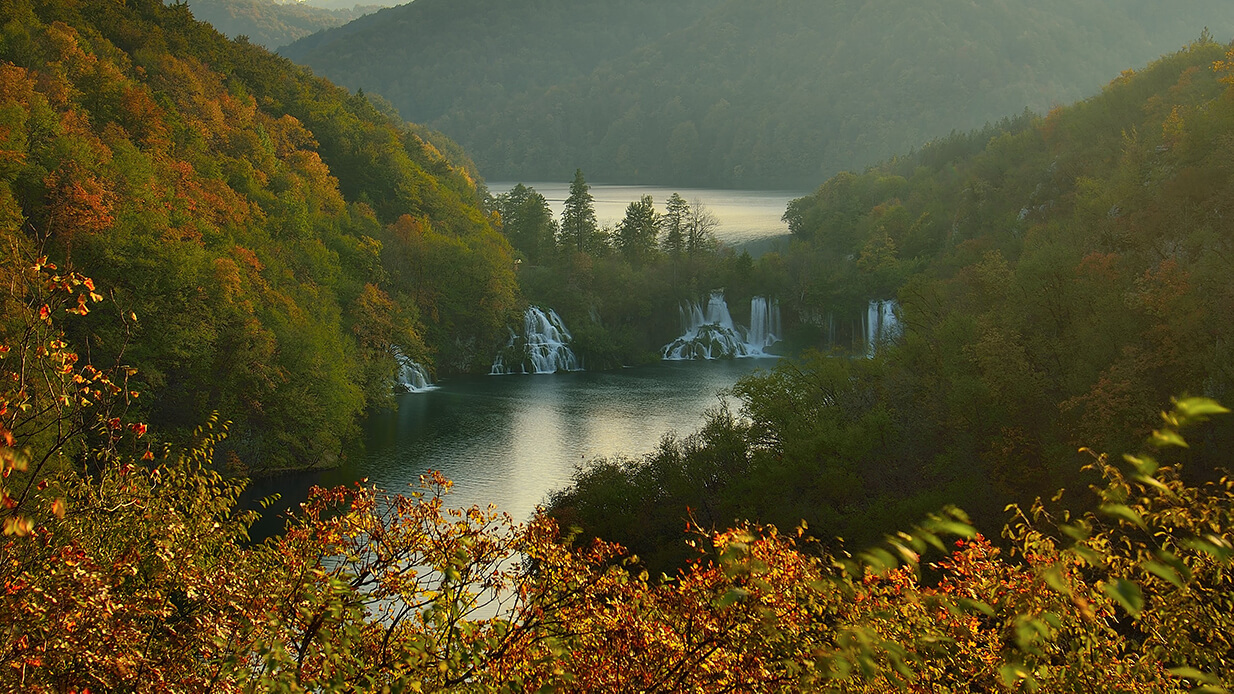
Image: Plitvice Lakes National Park
Slunj Rastoke
Rastoke is a village located in the town of Slunj, and almost everyone in Croatia will tell you that the first thing they think of when you talk about fairy tales is Rastoke. I mean, it's enough to see it in the distance when you go down the highway to believe that it is a magical village that got stuck in time. With the merging waters of the Slunjčica and Korana rivers, its water mills, and its small wooden houses, Slunj Rastoke reminds me of those villages where an adventurer rested before continuing his dangerous mission.
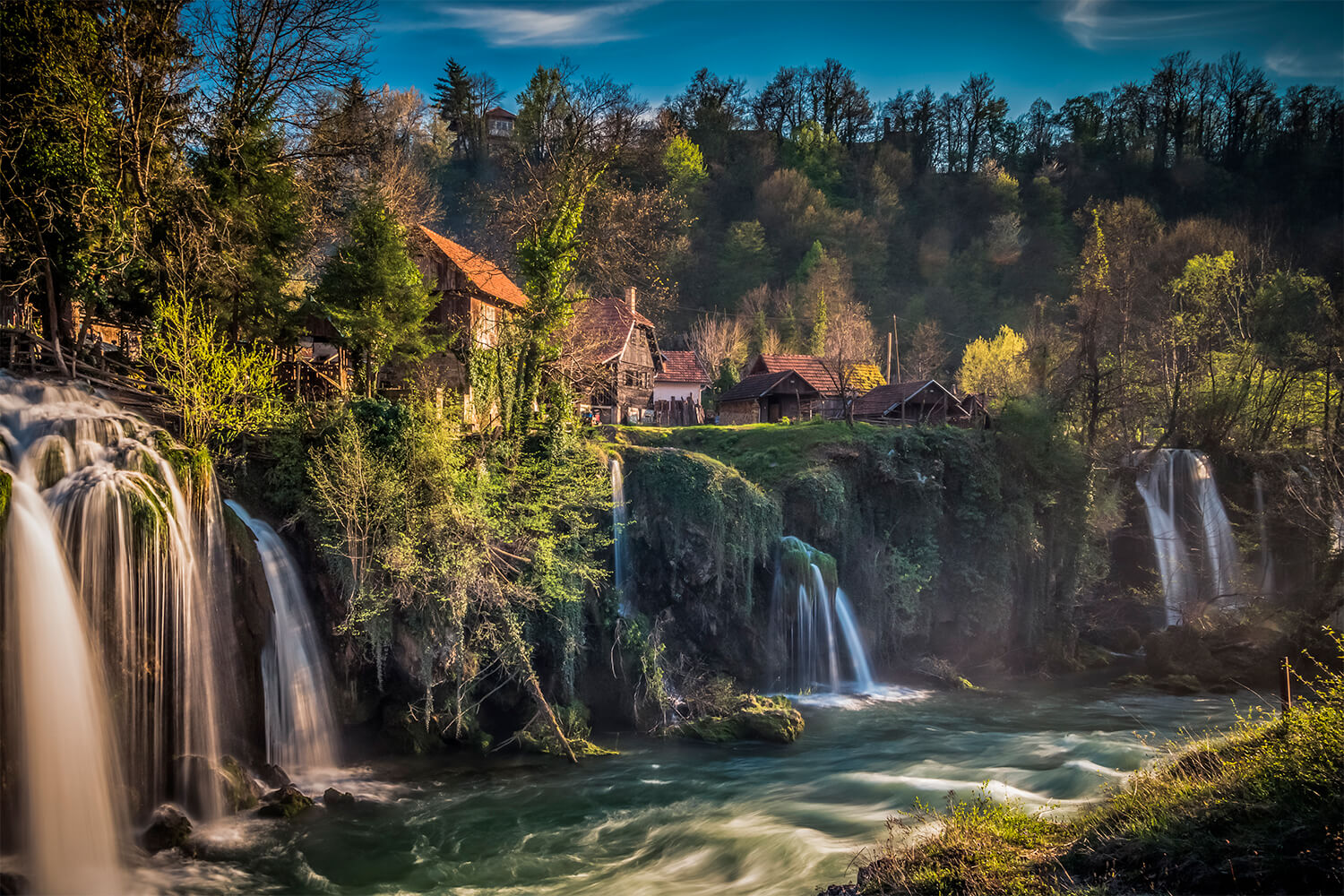
Image: Slunj Rastoke Tourist Board
Motovun
Perched high on a hill in central Istria, it doesn't get more magical than the ancient town of Motovun. Today it is known for its wines, gastronomy, and one of the oldest and most renowned film festivals, but for centuries, Motovun has been a cradle of history like no other in Croatia. For those familiar with the popular video game The Elder Scrolls V: Skyrim, Motovun is very reminiscent of the city of Whiterun, also resting on a hill and giving shelter to important kings and their subjects.
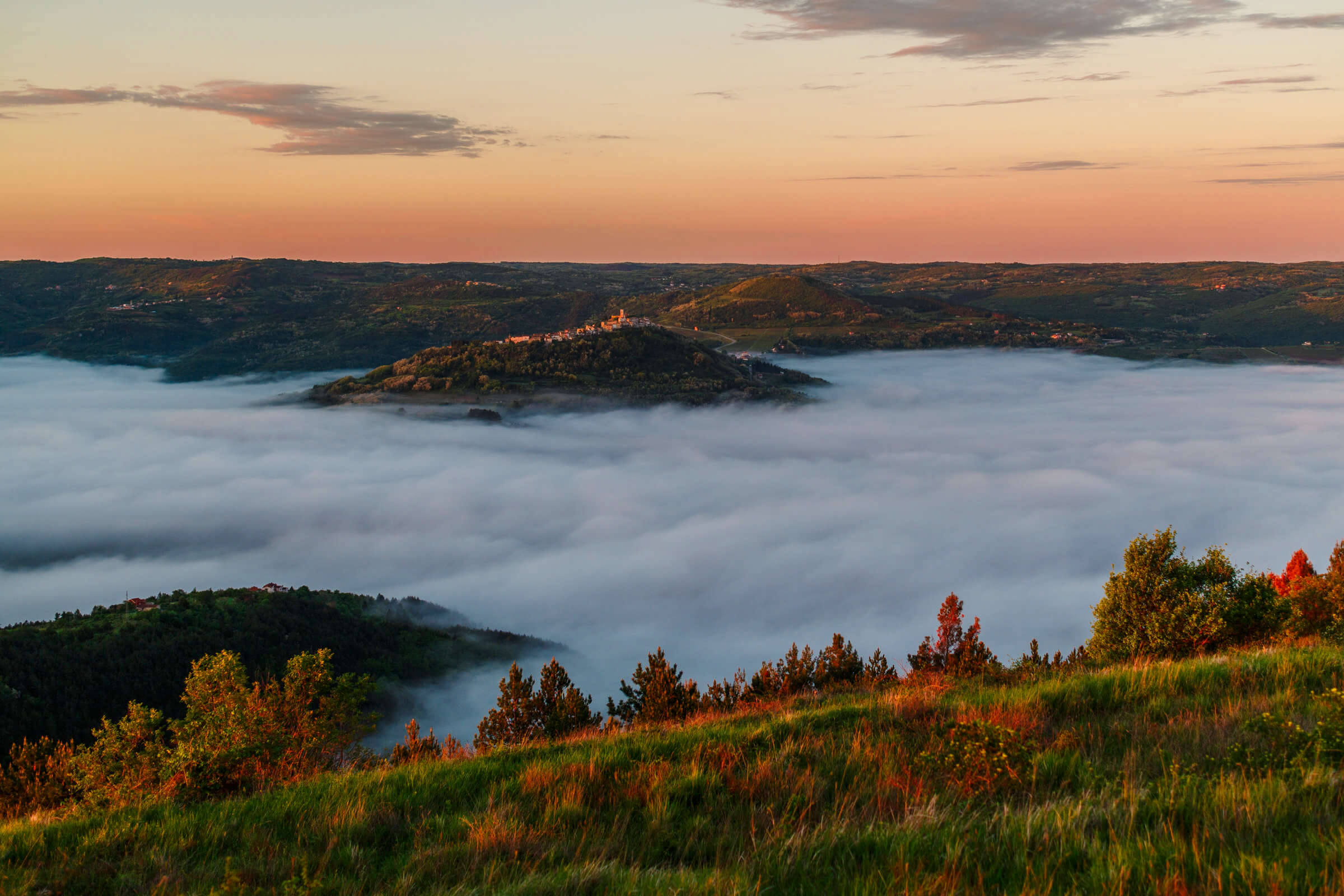
Photo: Mario Romulić
Ogulin
Ogulin is a big exception to this list in that, unlike the rest, its reputation as a fairy tale destination is already widely known even in other parts of the world. Ogulin is even home to the Fairy Tale Festival, which recently held its 17th edition from June 10-12 this year. If you want to really feel like you are in a place straight out of the most fantastical fables, the town of Ogulin in Lika-Senj county is the place to go. The Frankopan Castle and a gentle population that breathes magic and fantasy every day of the year are details that make Ogulin perhaps the most celebrated fairytale destination on our list.
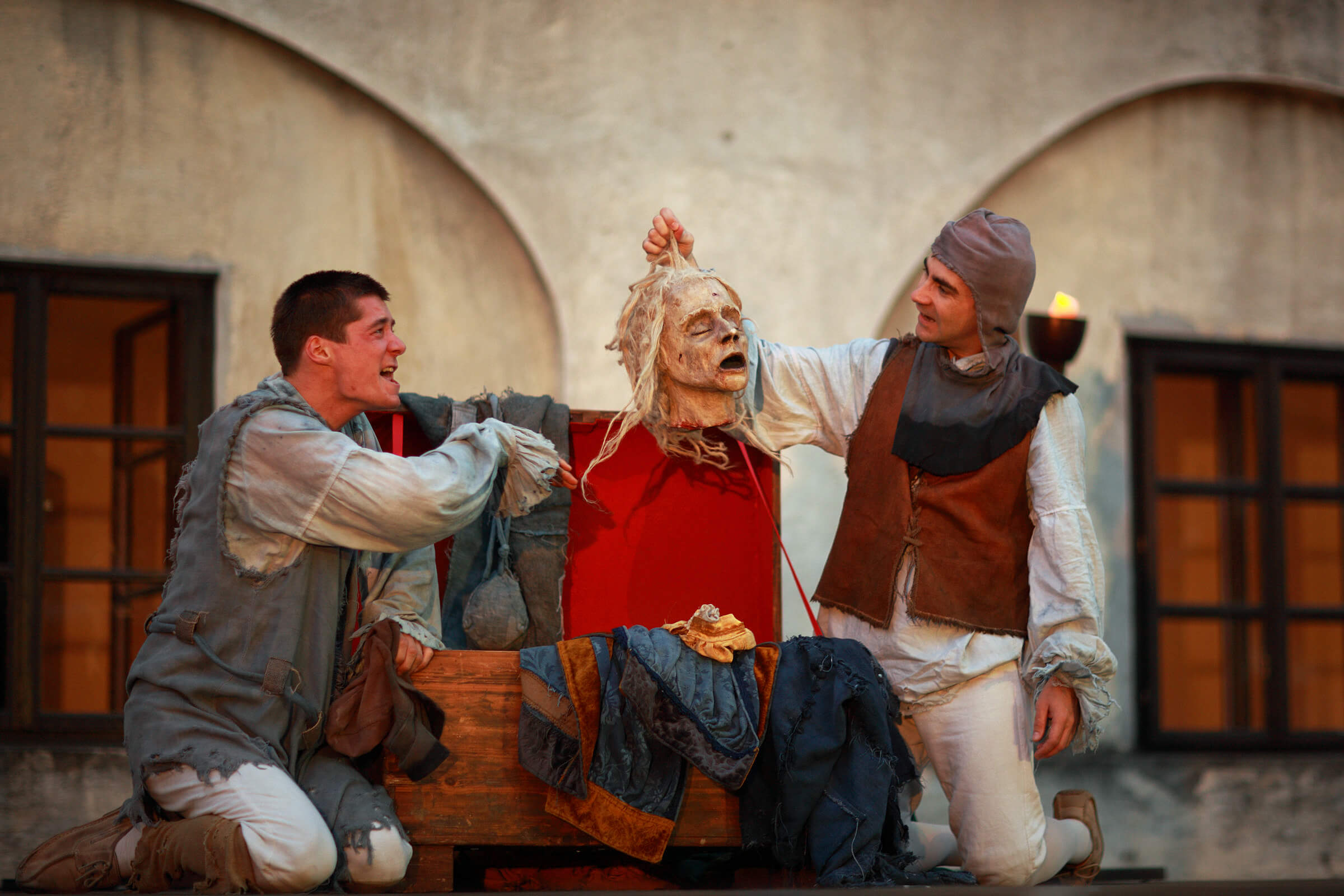
Photo: Mario Romulić
Kopački Rit
While I would have liked to choose a destination reminiscent of happy and colorful settings from fairy tales, the Kopački Rit Nature Park had to be included on this list anyway, perhaps to represent a more somber and chilling landscape. The best way to refer to Kopački Rit, compared to other destinations on this list, is that it is... different. Don't worry, Kopački Rit is still a wonderful and enchanting place, with spectacular scenery and boasts biodiversity like no other place in the country. But without a doubt, and with a lot of imagination, Kopački Rit is reminiscent of a gloomy swamp that you could only reach if you took the wrong path, and the only thing that can await you in such a place is a dark fate.
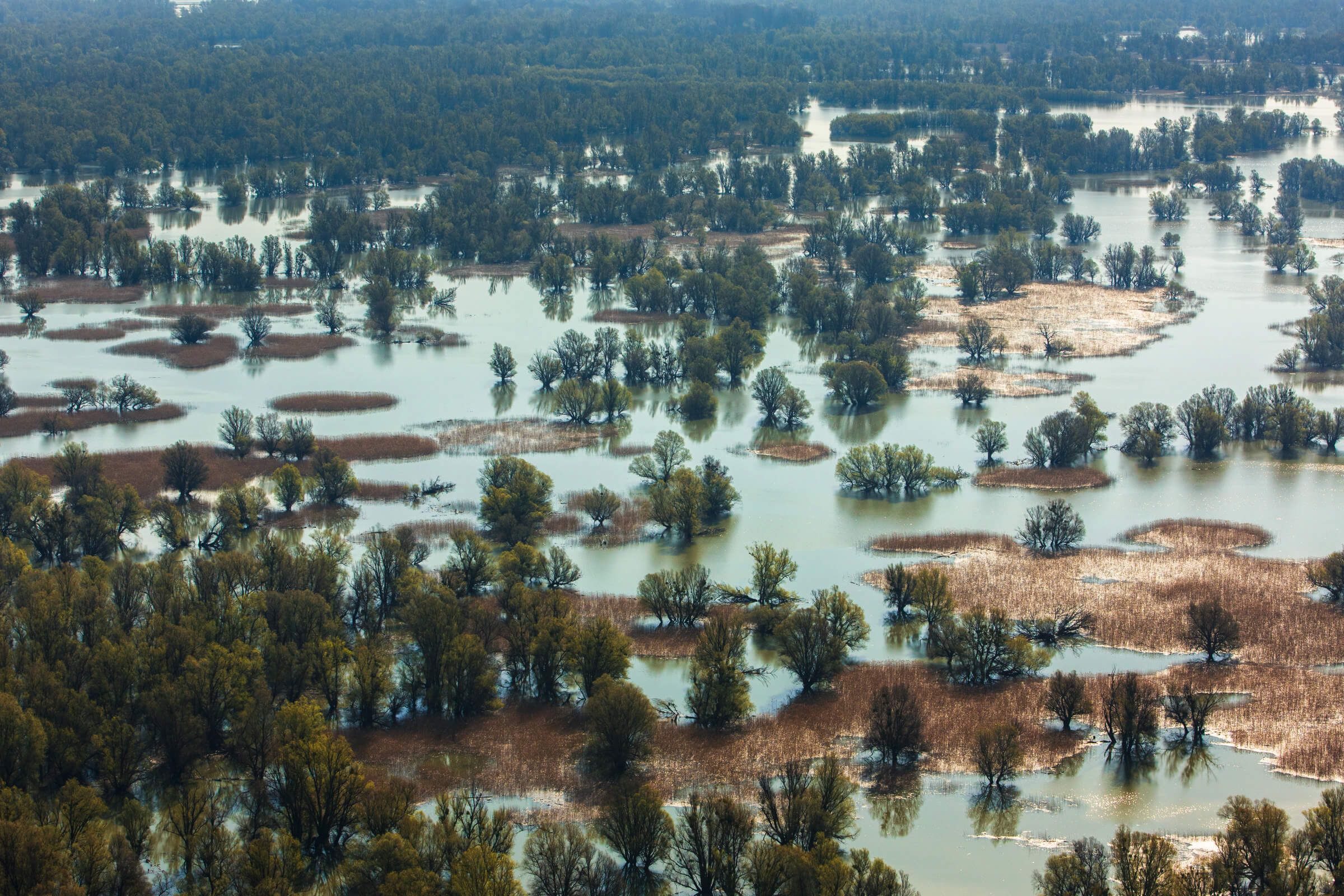
Photo: Mario Romulić
For more on travel in Croatia, follow TCN's dedicated page.
8 Magical Towns in Central Istria that Are Absolutely Worth Visiting
May 30, 2022 - Istria is one of the most fascinating regions of Croatia, and while most are more familiar with its magical seaside towns like Pula, Rovinj, Umag, or Poreč, the many medieval towns in Central Istria are just as impressive and definitely worth being explored.
In recent years, Istria has shown its might as a tourist destination, defying the surreal circumstances caused by the coronavirus pandemic by being easily reached by land from other European countries. But Istria is not at all a consolation prize for its proximity, quite the opposite. The largest peninsula in the Adriatic is home to spectacular towns, world-renowned wines and olive oils, unique cuisine, numerous beaches, five-star hotels, and a wealth of culture and history.
But not everyone comes up with an idea of this region beyond the sea, the islands, and the beaches, something that happens similarly in Dalmatia. Some forget that much of Istria's magic lies (not so) far from the coast. With this in mind, here we show you some of the best destinations you can visit in Central Istria. Warning: Not to be confused with Central Istria as a public administration, since it only covers some districts. In this article, we will mention destinations on the Istrian peninsula that are not located by the sea.
Pazin
Located right in the heart of Istria, Pazin is known for medieval Pazin Castle, the former residence of the Istrian margraves. The intensity of life here is pretty much the same in winter and summer, with the monthly exception of every first Tuesday, when a flood of curious buyers from all over Istria runs into the town to visit the traditional Pazin Market. Pazin is very rich in culture and history due to the presence of different civilizations, empires, and governments throughout time. Be sure to visit the Pazin castle, the Pazin abyss, the Franciscan monastery, the Memorial Center of Union and Freedom, the state archives, and more. Learn more about Pazin here.
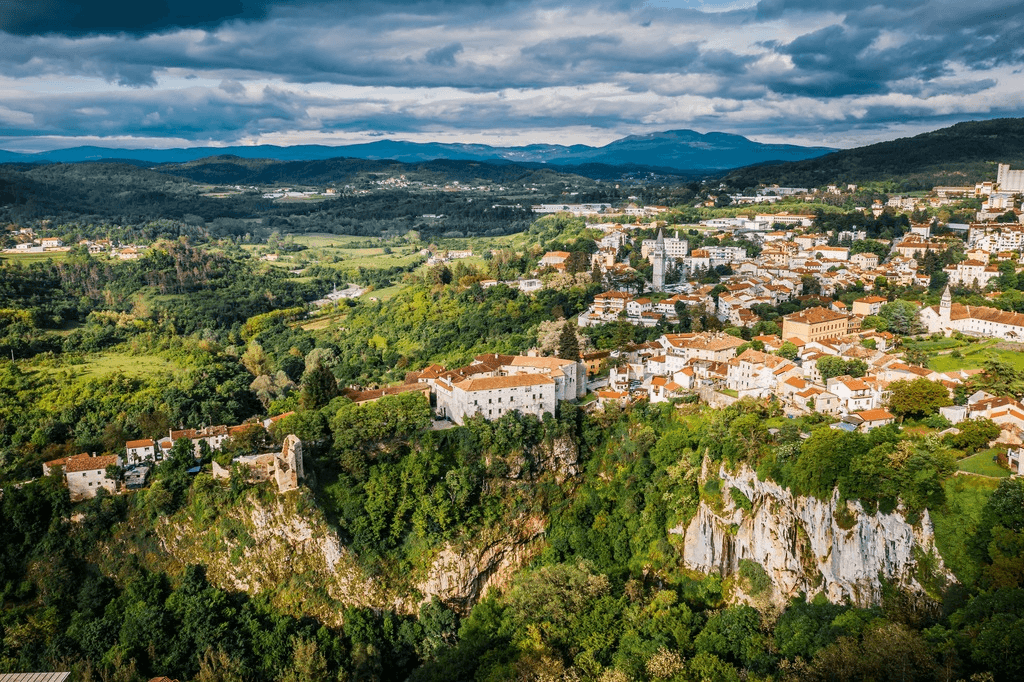
Image: Tourist Board of Central Istria/Official Website
Motovun
Motovun sits on top of a hill towering over the valley of Mirna, the biggest Istrian river. The location was settled since Celtic times, but the town we know today was mostly built under Venetian rule in the Middle Ages. Its centuries-old walls and buildings are the best preserved in Istria, giving the place a unique charm. Yet Motovun is more than its quaint architecture and breathtaking view. It is the Croatian capital of truffles and hosts a famous film festival, which will take place from July 26 to 30 this year. Learn more about Motovun here.
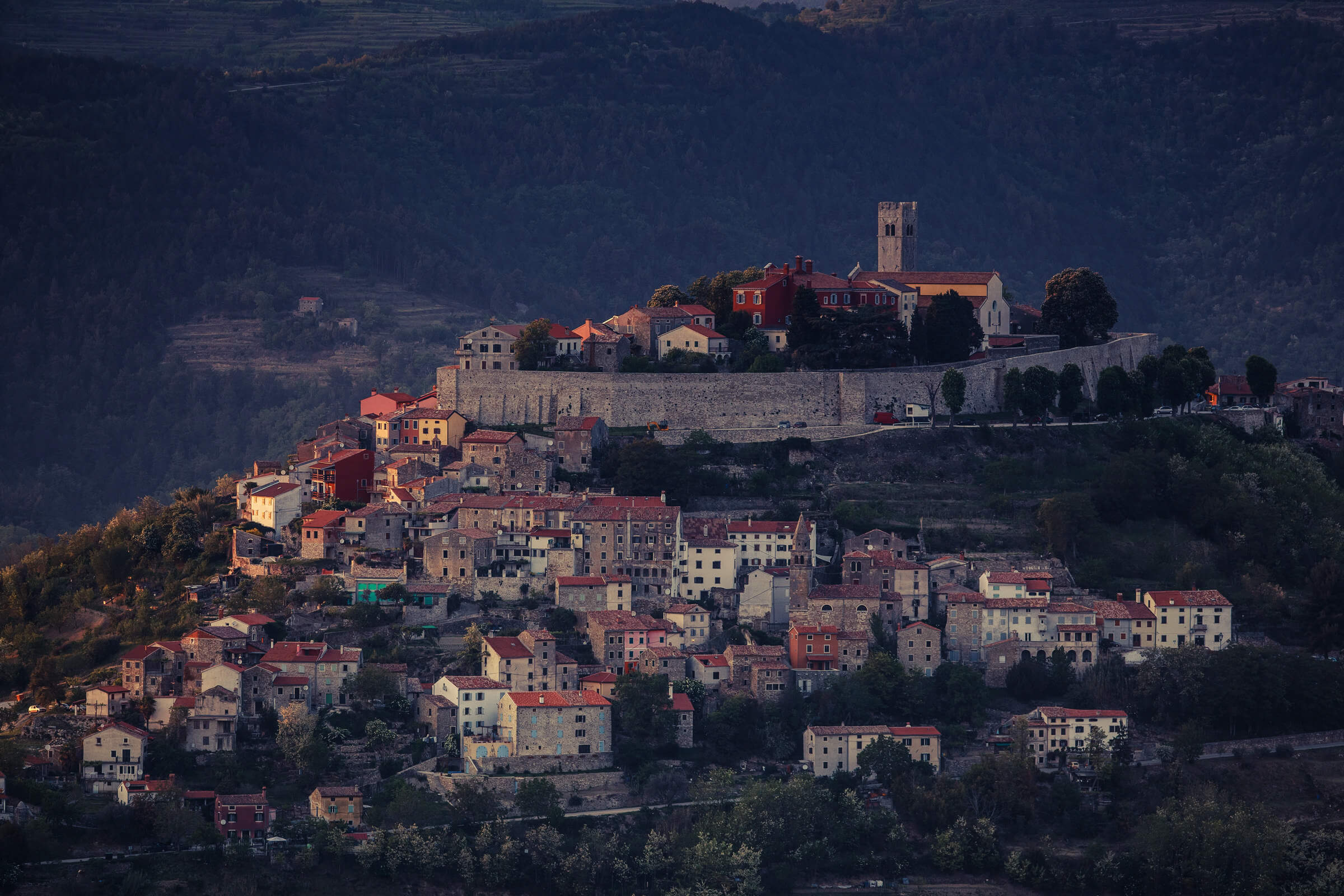
Photo: Mario Romulić
Hum
Often referred to as the smallest town in the world, Hum is a town situated on a hilltop above the source of the Mirna River. It is located in the vicinity of Buzet and Roč. The towns of Roč and Hum have been connected through a shared history and culture since ancient times, and are now also connected by the famous Glagolitic Alley. Hum has just 20 inhabitants, and therefore its well-known name as the smallest town in the world. Learn more from Hum here.
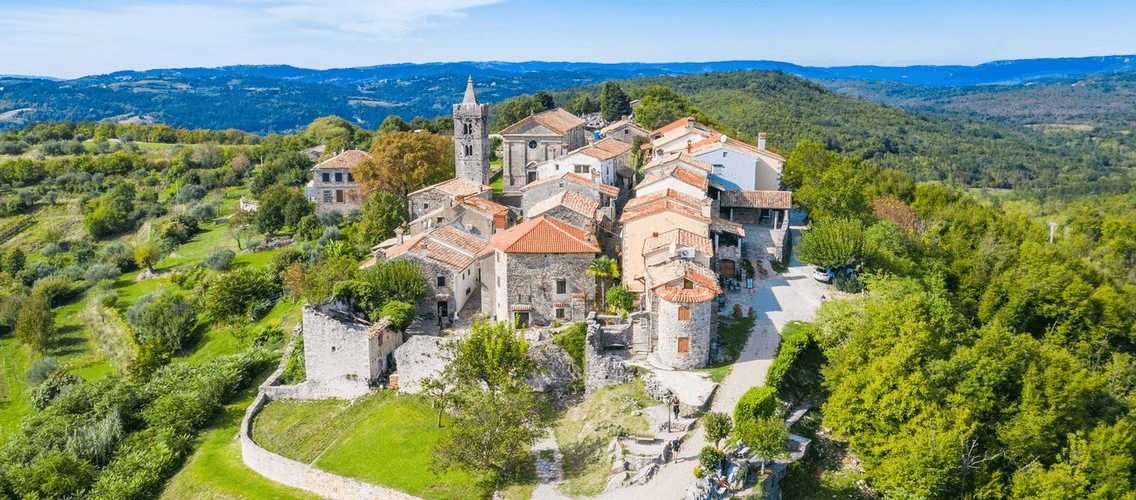
Image: www.valamar-experience.com
Labin
Labin is the biggest town in the otherwise not-so-populated and not-so-popular eastern Istria. In the past, the town was known for its coal mines. Nowadays, all the mines have been closed, and there are no more miners. The community is turning more and more towards tourism - but is far from being overwhelmed by it. Its old town, sitting on top of a hill, is among the most beautiful ones on the peninsula. Although it's not located by the sea, and exactly because of that, Labin has a stunning view of Kvarner bay. Learn more about Labin here.

Image: Labin-Rabac Tourist Board/Official website
Vodnjan
Vodnjan is situated near Pula, where excellent olive oil is produced, and its surroundings have the largest number of kažun houses, dry-stone houses in the Mediterranean. The largest church in Istria –Parish Church of St Blase was built at the end of the 18th century, with the 63-meter-high bell tower. The church holds a valuable collection of sacral art and preserved bodies of saints, the so-called Vodnjan mummies, due to which it is visited by around 16000 people a year. Learn more from Vodnjan here.

Image: www.visit-croatia.hr
Buje
The area of the town of Buje is located in the northwestern part of the Istrian peninsula. Approximately 5,300 inhabitants live in an area of 103.40 km2. The town of Buje is located between the rivers Mirna and Dragonja. In the north, there are the hills of the Upper Buje, and in the south the Adriatic Sea in Kanegra and the Piran Bay. It is a rolling and hilly area covered with vineyards, olive groves, and arable land dotted with oak, cherry, and pine forests, a karst belt full of interesting geological phenomena, and meadows of Mediterranean vegetation, among which thyme and spruce predominate. Learn more about Buje here.

Grožnjan
The nearby Motovun might be the quintessential Istrian hilltop town, but Grožnjan is also well worth visiting. As is the case with many Istrian towns, it was settled during the Roman times, built under Venetian rule in Middle Ages, and well preserved up to today. The place was almost deserted after World War II, but in 1965 a group of artists decided to turn the town into an art colony, which remains up to the present. It’s a great accommodation spot for those who don’t need the sea, and it makes for a good base for exploring the hilly part of Istria. Learn more about Grožnjan here.

Photo: Mario Romulić
Pićan
Sometimes it is not easy to follow the traces of Pićan in historical sources because it hides under various names. The origin of the name Petina is attributed by some to the assumption that the Diocese of Pićan was the fifth in the world, with the word five (pet, in Croatian) having Celtic roots. Pićan is certainly inhabited in distant prehistory. The oldest parts of the Istrian hillfort were located on the hill of Calvary, north of today's settlement, and then it is assumed that the Celtic tribe Secusa lived there. In Roman times, probably in the same strategically well-chosen place, there was a military stronghold and the settlement of Petina. Learn more about Pićan here.
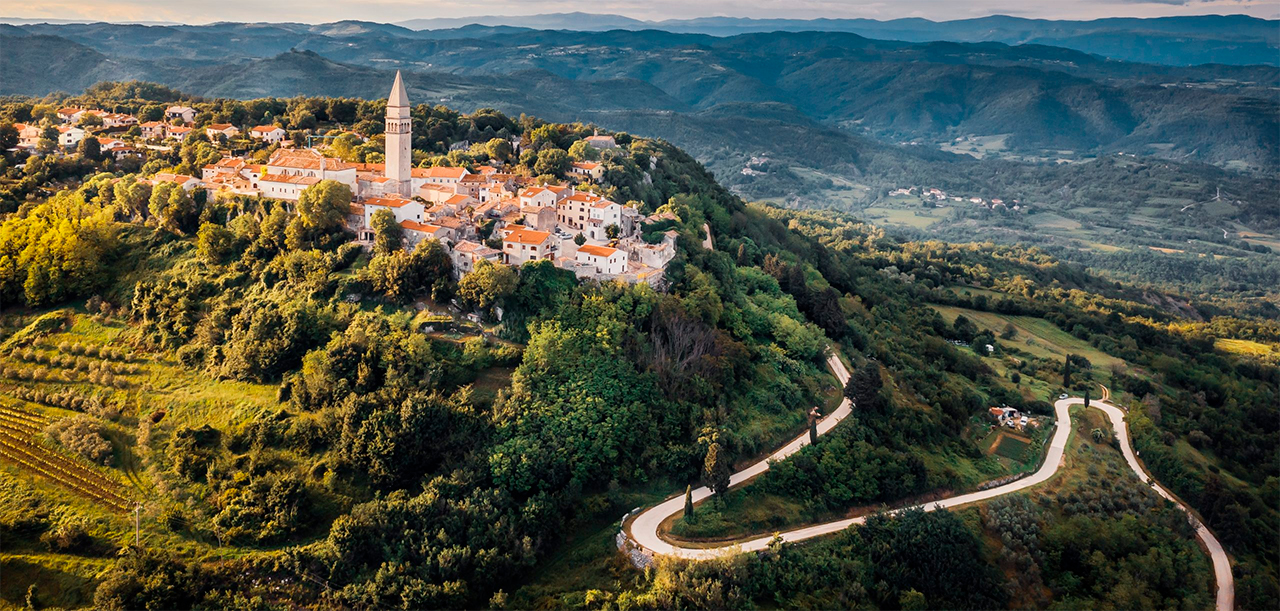
Image: Pićan municipality/Official website
For more on travel in Croatia, follow TCN's dedicated page.
Kaštelor-Labinci, Motovun, and Veliko Trojstvo in the Race for UNWTO Awards
September 21, 2021 - Three Croatian municipalities and villages, two in Istria and one in Bjelovar, are among the candidates for the novel initiative of the World Tourism Organization to promote rural tourism, and this is why Kaštelor-Labinci, Motovun, and Veliko Trojstvo will compete in the UNWTO Awards.
With the aim of improving the role of rural tourism, the World Tourism Organization (UNWTO) has launched a pilot initiative "Best Tourism Villages", reports HrTurizam.hr. As part of the activities, UNWTO member states, until 15 September, had the opportunity to apply for up to three candidates: villages or municipalities. They will present their places as drivers of sustainable change in the social, economic, and environmental aspects. The Municipality of Kaštelir-Labinci, the Municipality of Motovun from Istria, and the Municipality of Veliko Trojstvo from Bjelovar-Bilogora County were elected as Croatian representatives.
The initiative includes three pillars and two awards. Villages that are an outstanding example of a rural tourism destination and that are committed to sustainability in all its forms - economic, social, and environmental - will be awarded the label "Best Tourist Villages of the UNWTO". Villages that do not fully meet the criteria for the label will be provided with an upgrade program to support the UNWTO and their partners in working in problem areas. Finally, a network will be created that will provide space for the exchange of experiences and good practices, learning and creating new opportunities for development. It will include representatives of villages awarded the “Best Tourist Village” label by the UNWTO, villages participating in the Upgrade Program as well as experts, public and private sector partners engaged in the promotion of rural development tourism.
The aim of the UNWTO Awards is to strengthen the role of tourism as a positive force for transformation, rural development, and community well-being. It seeks to increase the sector's contribution to reducing regional inequalities and combating the depopulation of rural areas. It also seeks to enhance the role of tourism in valuing and protecting rural villages, along with landscapes, knowledge systems, biological and cultural diversity, local values, and activities, including gastronomy.
To find the most complete information on all the destinations in Croatia that you can visit, take a look at the Total Croatia guides HERE. Now in your language!
For more, check out our dedicated travel section.
Motovun Film Festival to Be Held on 27–31 July with Epidemiological Measures
ZAGREB, 11 July, 2021 - The Motovun Film Festival will be held from 27 to 31 July, with recommended epidemiological measures in place due to the pandemic, and it will feature a series of screenings, as well as musical and other events.
The organisers have said that only those with COVID certificates will be able to attend indoor screenings and concerts, as well register in the festival camp.
Everyone will have access to the festival location, and COVID certificates will not be required for outdoor screenings, but visitors will have to keep their distance and the cinema seating capacity will be reduced.
There are no special measures for outdoor events and hospitality establishments until midnight.
For those without a COVID certificate, the festival will organise a testing centre in Motovun, and the schedule and conditions will be announced later.
With this combination of measures, the festival is trying to achieve the best balance between safety and openness to everyone, the organisers said, adding that everyone in their crew has a COVID certificate.
For more on lifestyle in Croatia, follow TCN's dedicated page.
For more about Croatia, CLICK HERE.
PHOTOS: Outstanding Contemporary Croatian Architecture of the Year
February 10, 2021 – 10 of the most outstanding examples of contemporary Croatian architecture have been selected by the Association of Croatian Architects to compete in the extremely prestigious Mies van der Rohe Awards. Held only once every two years, they are the European equivalent of the Pritzker Prize for Architecture.
The Mies van der Rohe Awards are a really big deal. The greatest works of European architecture compete for recognition in the competition. The greatest success of Croatian architecture in the awards was attained by UP studios' Toma Plejić and Lea Pelivan, who received a special award for upcoming architects and had their high school in Koprivnica named the best building in that category in 2009. The success has had a considerable impact on their careers since.
Being held only once every two years, Croatian architecture projects completed since the closure of entries for the 2019 awards are eligible to be submitted. Here are the outstanding examples of contemporary Croatian architecture that will represent the country in 2022.
Cinema Urania Zagreb
An old neighbourhood cinema built into the back streets near Kvatric. In their redesign, 3LHD preserved the best features from this early example of concrete engineering in Croatian architecture. They added a glass pavilion at the entrance, atriums and skylights, flooding the former darkness with the natural light needed for its new purpose as an event and work space. © Jure Živković
© Jure Živković
Grand Park Hotel, Rovinj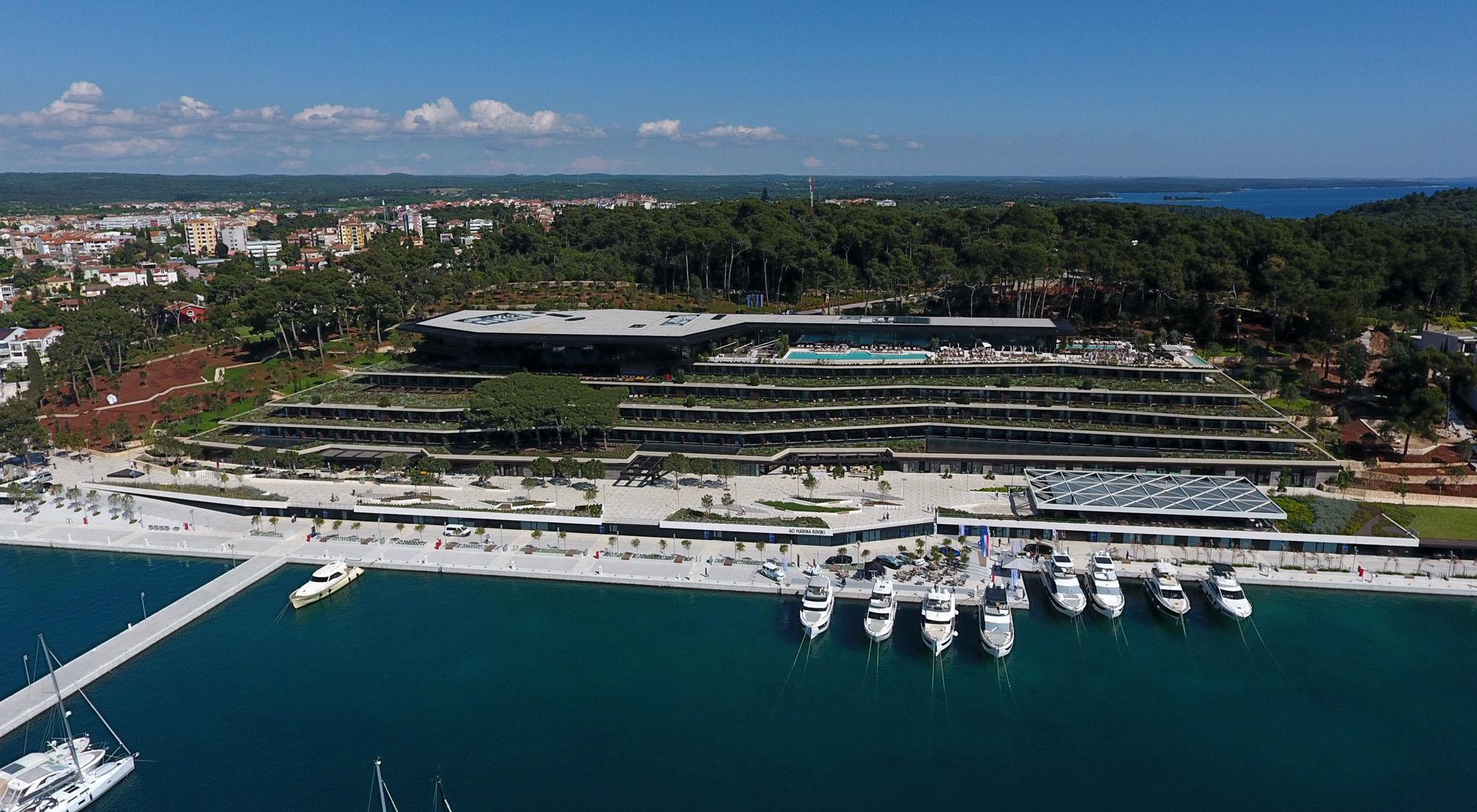
Sprawling widely across six stepped levels, the new luxury Grand Park Hotel and spa could easily have looked a long swipe of concrete. But, by places greenery on each of its staged roofs, architects 3LHD have ensured that no matter where you are in the 500-guest-capacity building, your view places you within a garden, looking out onto Rovinj Old Town and the expanse of the Adriatic. Croatian architecture at its most breathtaking. © Alukoenigstahl hr
© Alukoenigstahl hr
Ivanja Reka Elementary School, south Sesvete, east Zagreb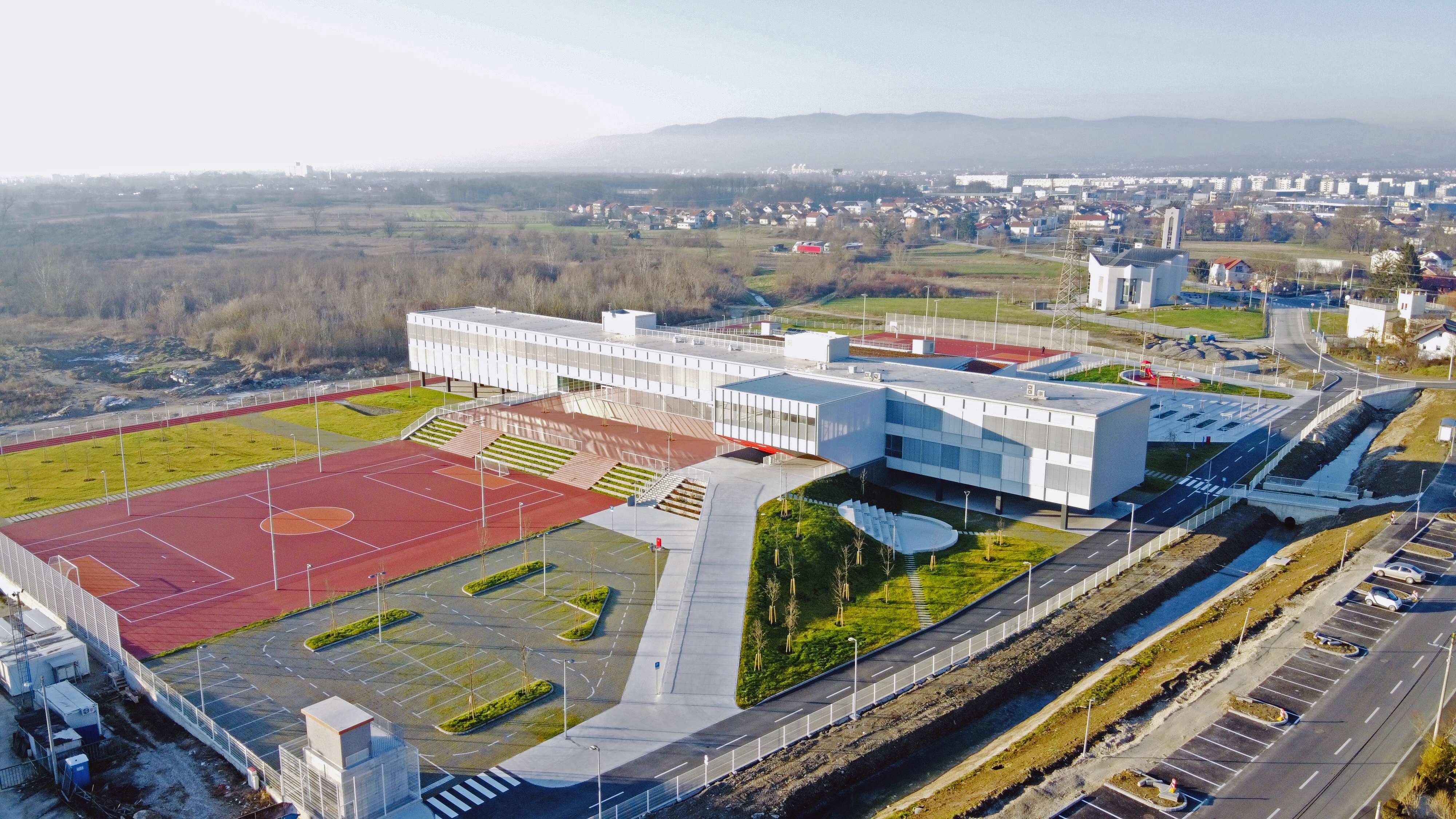
If every elementary school looked as pretty and was as well equipped as Ivanja Reka Elementary School in the south of Sesvete, eastern Zagreb, you could well believe daily attendance would never drop below 100%. Designed by a team of architectural authors (SUBMAP studios Marija Burmas and Ivo-Lola Petrić, and Jakša Kalajžić from JKA Arhitekti), the multi-level main building sits centrally, surrounded by sports, recreation and other facilities creating an impressive view for both those outside and within.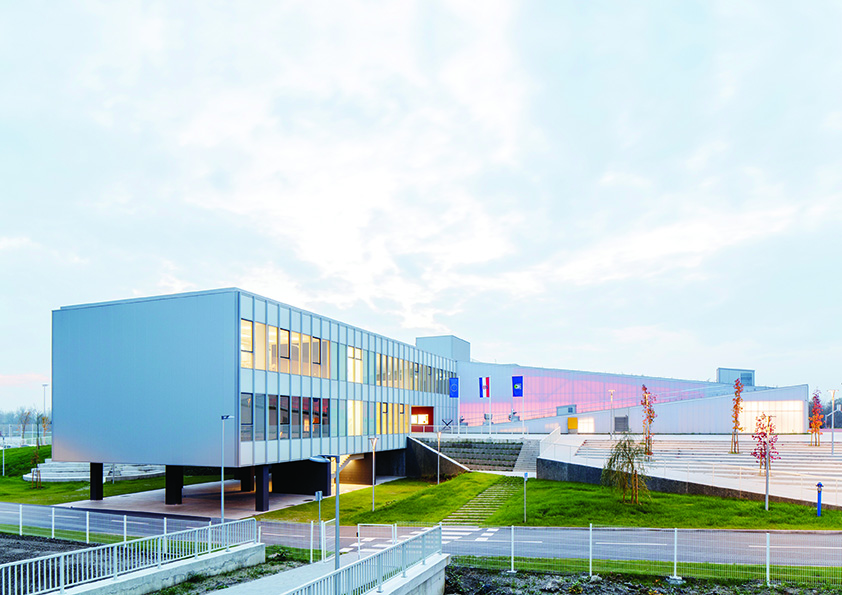 © Ivanja Reka Elementary School / Domagoj Blažević
© Ivanja Reka Elementary School / Domagoj Blažević
Roxanich Wine & Heritage Hotel, Motovun, Istria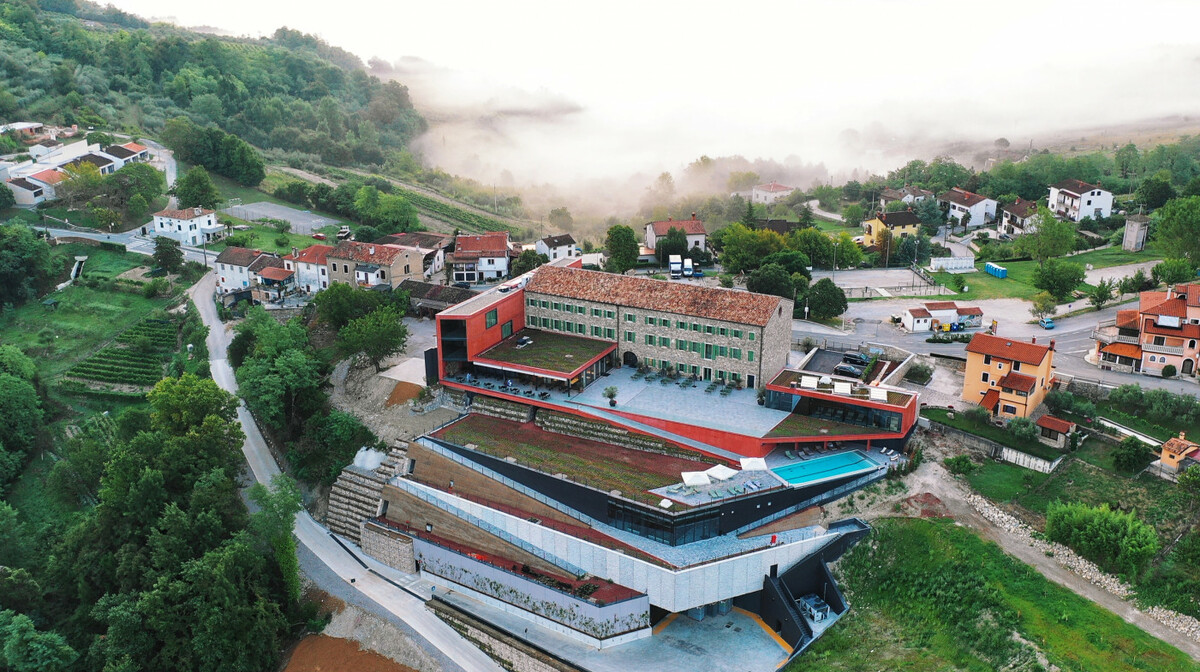
The view is unmistakably Istria. Vineyards carpet the land below and - rising above - the picturesque hilltop town of Motovun. Helmed architecturally by consistently bold Rijeka designer Idis Turato, this multi-level, multi-purpose redesign retains the traditional feel of its existing stone building and its purpose – there's a huge wine cellar beneath – but has opened up the space to give stunning views, not least over a sun deck that spectacularly reflects the sunrise and sunset. This is an active winery, with works and equipment all housed within its lower floors, not that you could tell from the 25 person capacity boutique hotel, restaurant and wine shop upstairs. © Roxanich.hr
© Roxanich.hr
Four Houses for Four Brothers, Diklo, Zadar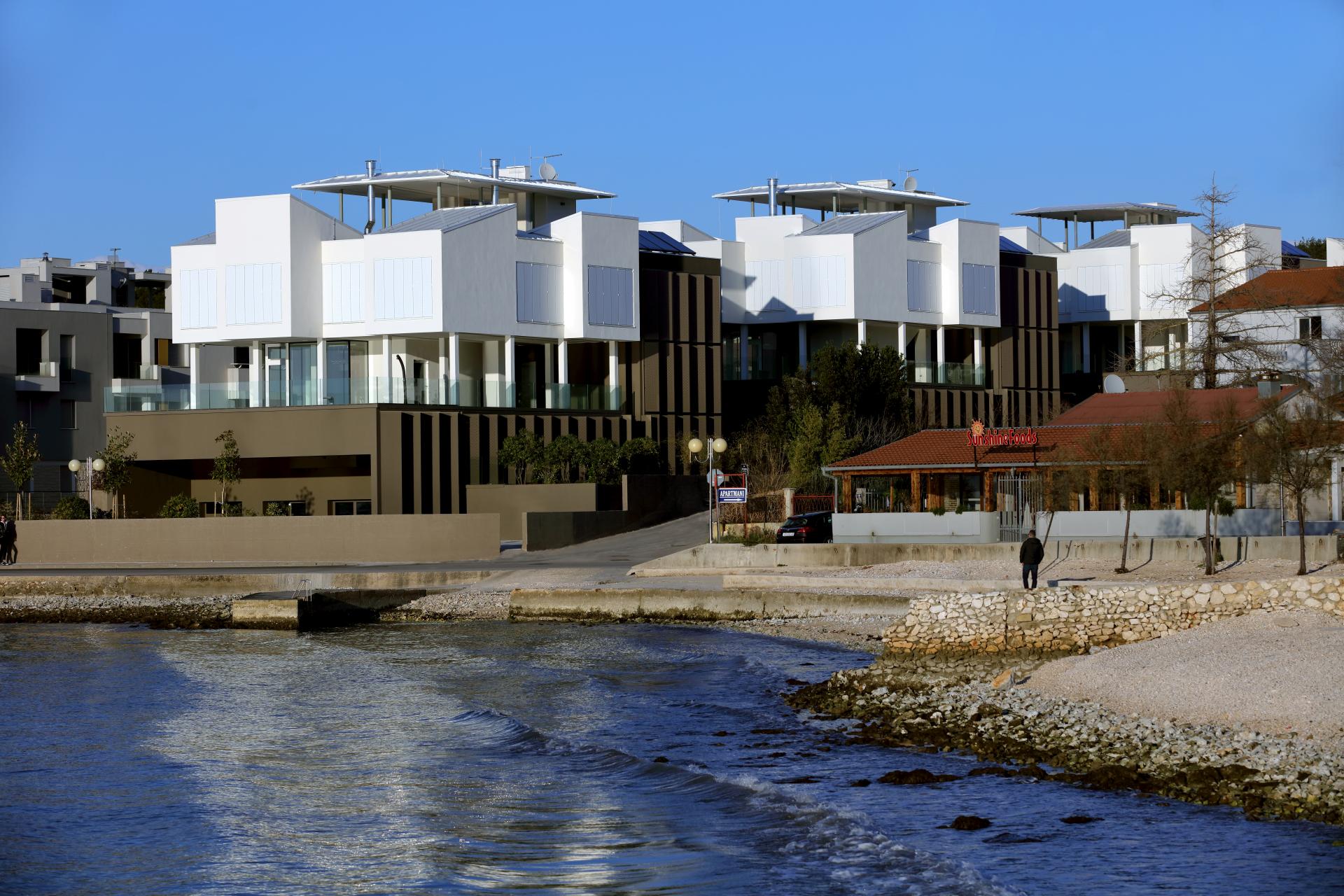
Judging from a theme of project titles used by architects Iva Letilović and Igor Pedišić, we're not sure that Four Houses for Four Brothers was actually commissioned by four brothers or that four live there. But, you could well believe they could. The ultra-modern set of independent houses, located next to a beautiful stretch of coast in a north Zadar neighbourhood, was specifically designed to address a distinctly Croatian reality – how to open up some of your dwelling to seasonal guests while you remain at home. The design separates the buildings clearly into separate quarters which allow privacy, comfort and minimal encroachment for both visitors and residents. © Igor Pedišić
© Igor Pedišić
Galić Winery, Kutjevo
Award-winning outfit Zagreb-based studio Dva arhitekta have an existing, jaw-dropping design for a rural winery commissioned by famous makers Galic. However, that project, as yet, remains unrealised. But, their winery for Galic in the centre of Kutjevo town is complete. Melding the traditional and the contemporary, the upper section of the building is a bold and unblemished red brick, adorned with the winemaker's unmistakable logo. Beneath, concrete arches invite your eyes into the actual wine cellar – neat rows of barrels, protected behind glass walls that are set back from the facade. Brilliant! © Damir Fabijanić
© Damir Fabijanić
Seecel Centre, Zagreb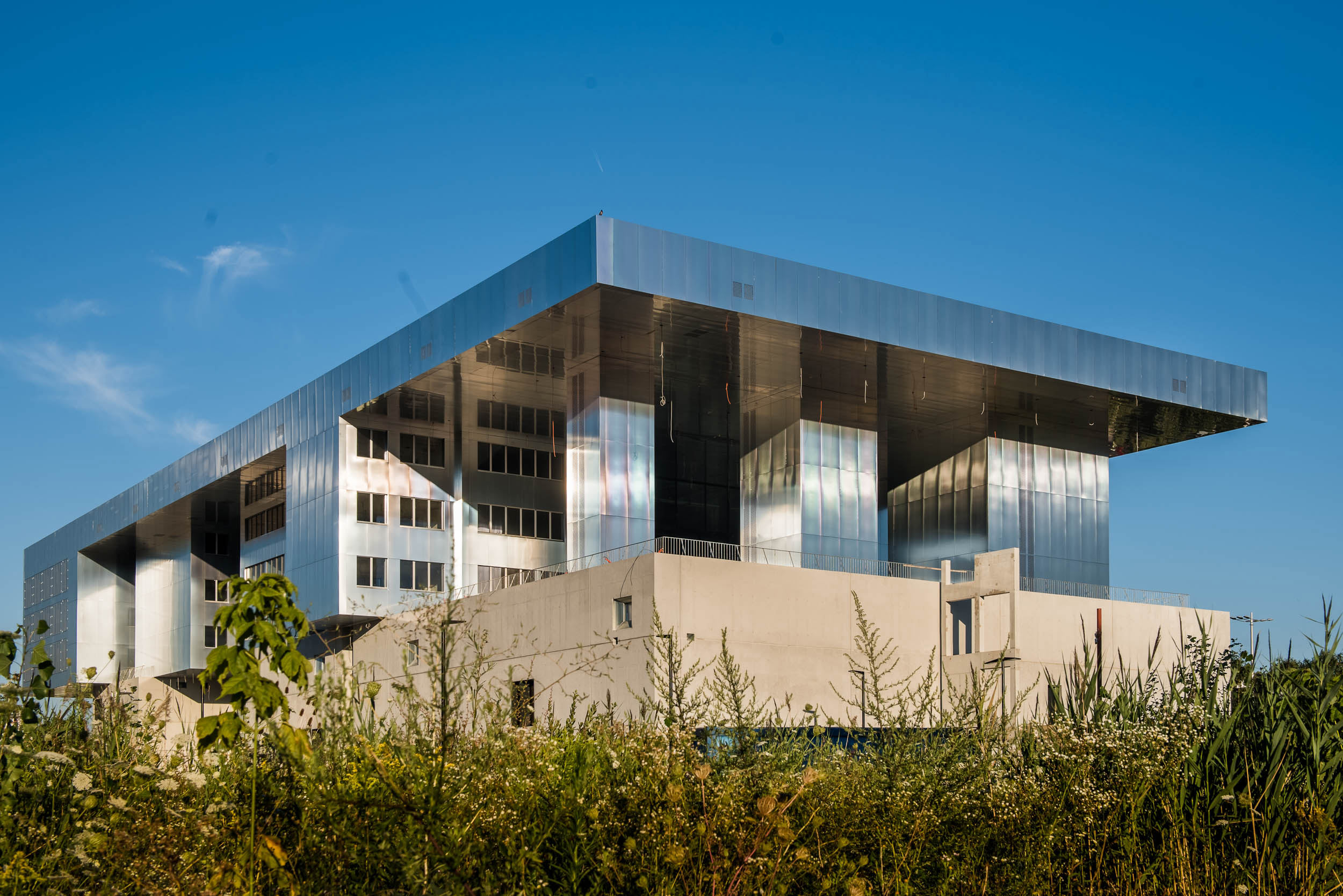
Designed as a regional centre for the development of entrepreneurs and its construction costs generously part-funded by European money, the Seecel Centre arrived long overdue and does not house its intended inhabitants. Such matters are best left for different articles as, here, we're concerned with the undeniable finery of this building's architecture and appearance. Holding space for accommodation, offices, communal collaboration, education and presentations, the five-floored building uses ultra-modern building materials and construction methods to make it low-energy, its great blocks of covered concrete, with glass windows set further back, echoing old fortifications. It was designed by Igor Franić who, in Croatia, is perhaps best known for the Museum of Contemporary Art in Zagreb and completed by him and his team at SZA / Studio za arhitekturu d.o.o.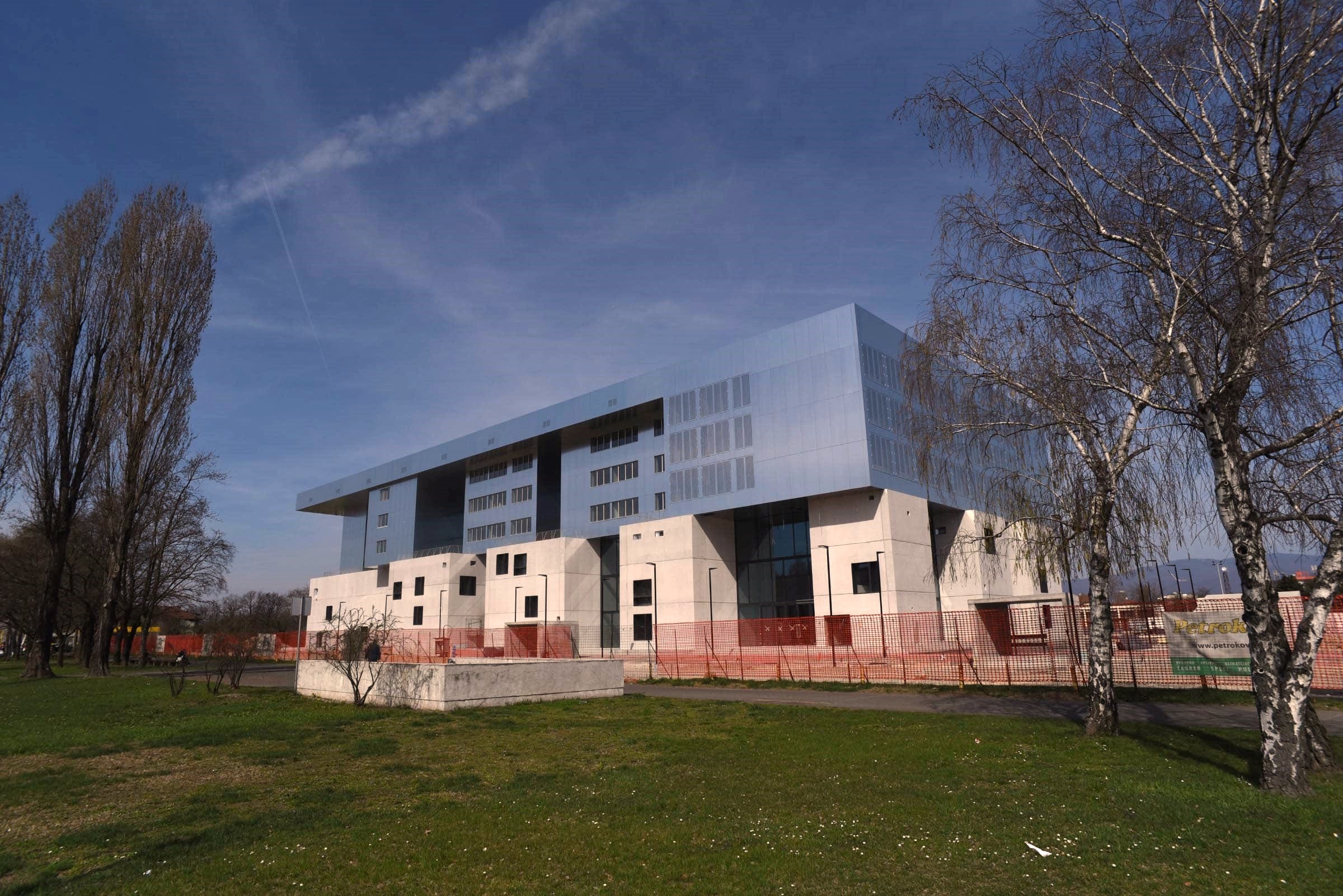 © Site Project d.o.o.
© Site Project d.o.o.
Trg Poljana, Šibenik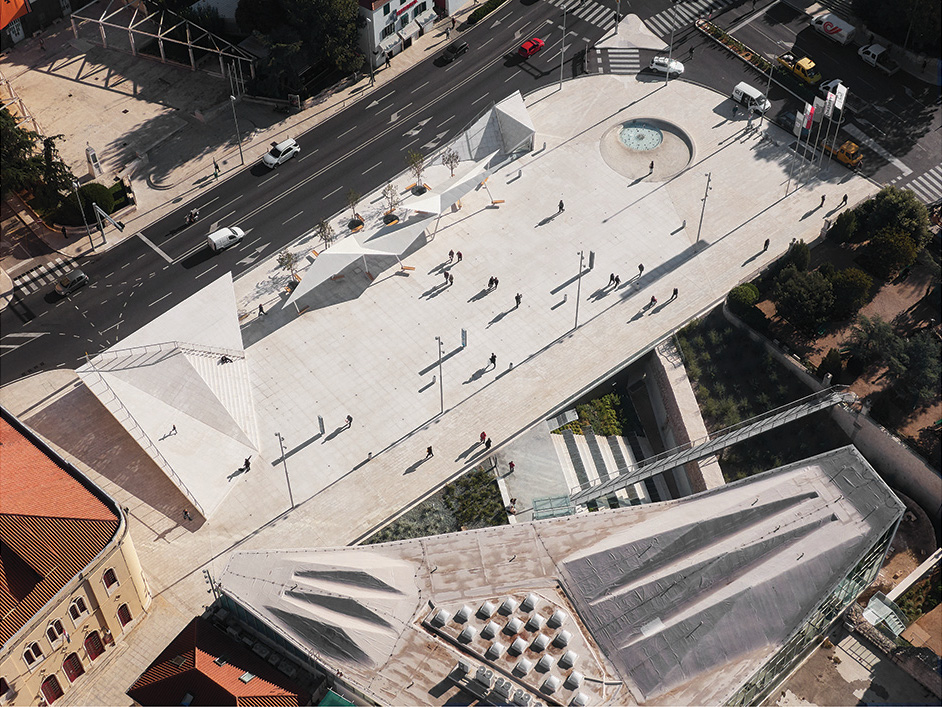
Not a small amount was asked of project architects Atelier Minerva from Dubrovnik in the task to create Trg Poljana in Šibenik. The site had long been earmarked for a much-needed, official town square – a place for events and public gatherings. But, the town was also woefully short on parking. By burying a multi-level car park beneath the open space, the architects successfully met both demands. Triangular shapes sit at an angle above shaded seating, echoing the inclines on the roof of the Juraj Šižgorić City Library opposite. Clever.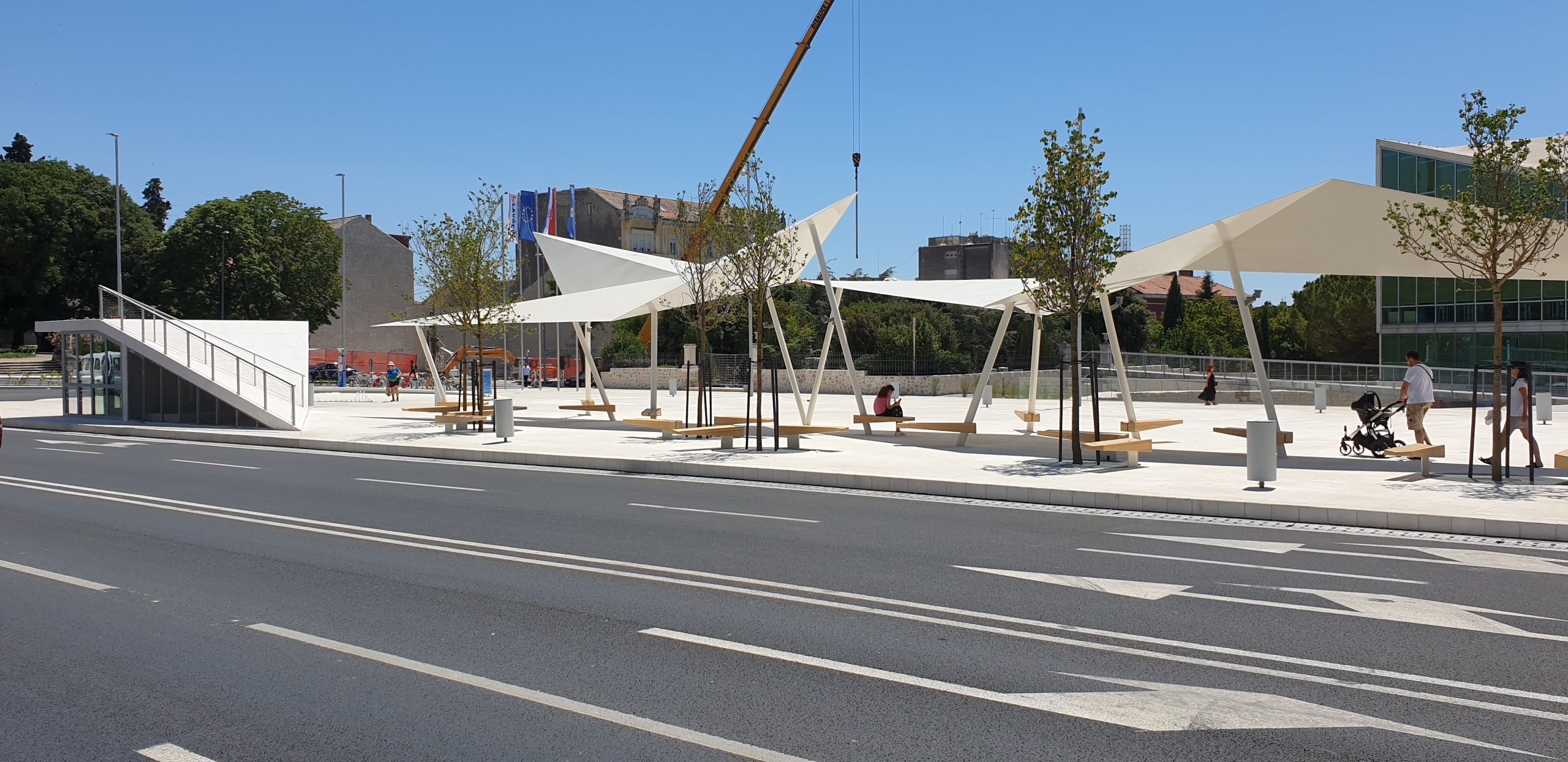 © Ervin Husedžinović / Eccos-inzenjering
© Ervin Husedžinović / Eccos-inzenjering
Homestead on Hartovski vrh, Žumberak, Zagreb County
A collection of multi-purpose rural buildings, Homestead and Meditation Centre on Hartovski vrh was commissioned and designed for use by the Buddhist Center Zagreb. Their aim was to relocate activities such as chan, yoga, meditation, healthy living and teaching to a peaceful retreat outside of the city. Architects Branimir Rajčić and Mariela Žinić began the project in 2015, with the completed site arriving in 2019. Modern building materials are used, but not so the striking collection seems out of place within a partially agricultural setting. The set of buildings includes a residential dwelling and a larger hall for meetings and activities, both of which use large windows to allow the light and nature to flood in. © Robert Leš
© Robert Leš
Square of Traditional Crafts, Varaždin
A tricky task was given to architects Studio Konntra – how to enliven and modernise a traditional old square in the centre of one of Europe's best-preserved Baroque Old Towns. They did this by constructing transportable kiosks to house small outlets for local artists and craftsmen that cater to visiting tourists who come to the square. When occupied during the day, the plain wooden interiors allows the crafts to take centre stage. But, after closing time, the outsides of the wooden doors are brightly coloured and adorned with paintings, a welcoming environment for residents to use at night.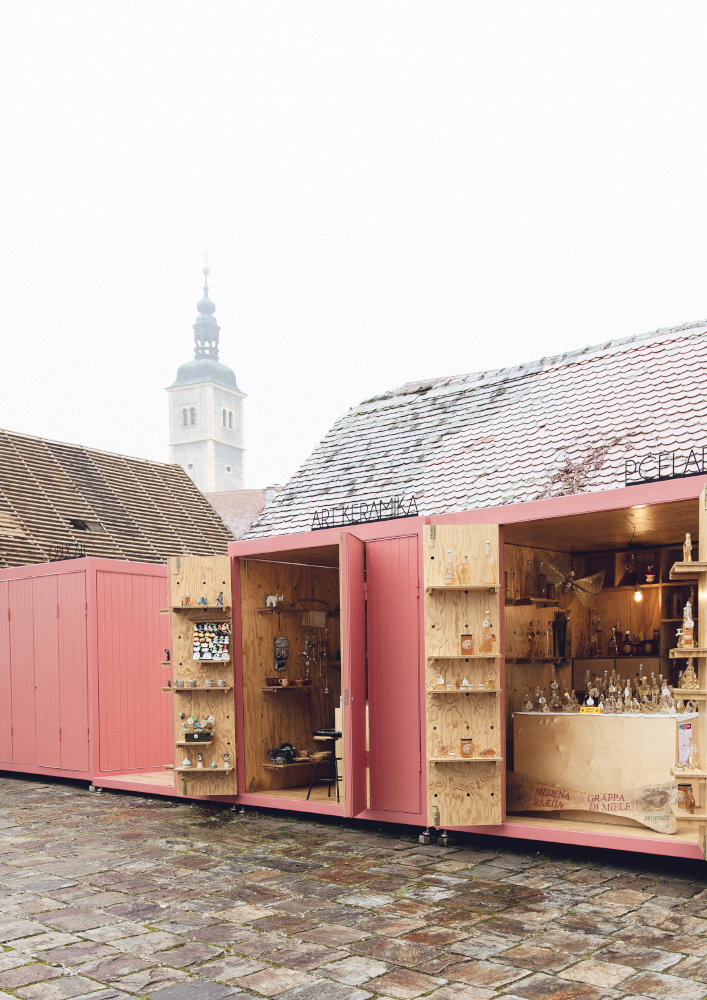 © Studio Konntra
© Studio Konntra
PHOTOS: Croatia's Incredible Culture And Nature - Romulić and Stojčić New Exhibition
August 25, 2020 - The award-winning artistic photography duo Romulić and Stojčić showcase their work 2011 – 2019 for free at Ulupuh Gallery, Zagreb until Monday 7 September
Mario and Dražen aka Romulić and Stojčić have been collaborating for almost 20 years. Their innovative photography is often breathtaking and shows the very best of Croatian cultural and natural heritage.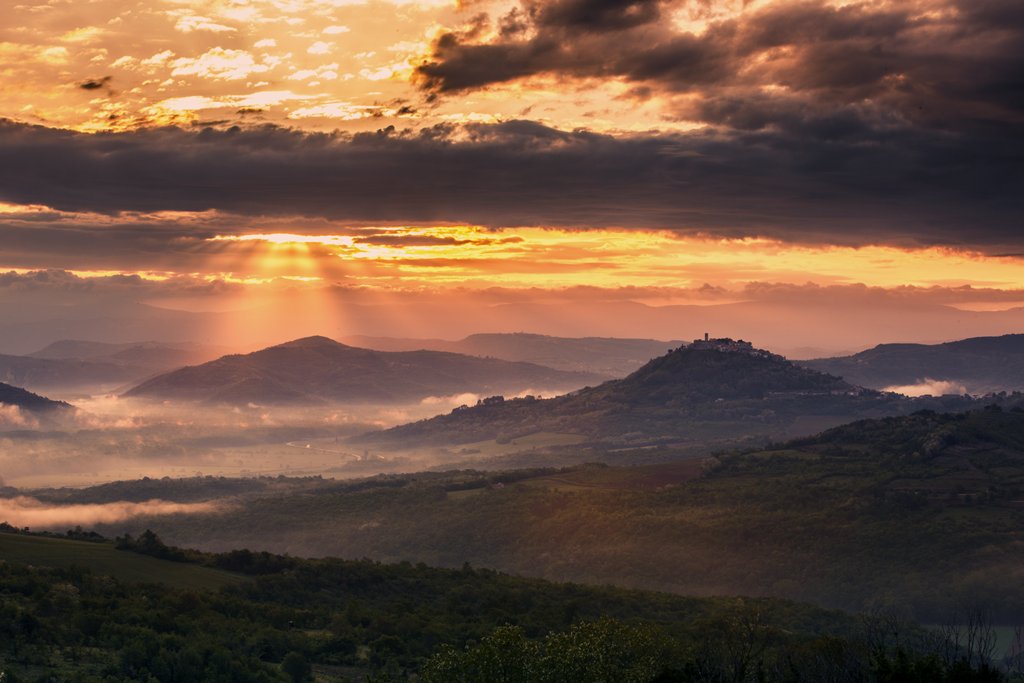
Motovun

A new exhibition, 'Interval' showcases some of their best-loved work from 2011 – 2019. Curated by Elizabeta Wagner, the exhibition opened on Tuesday 25 August and runs until Monday 7 September.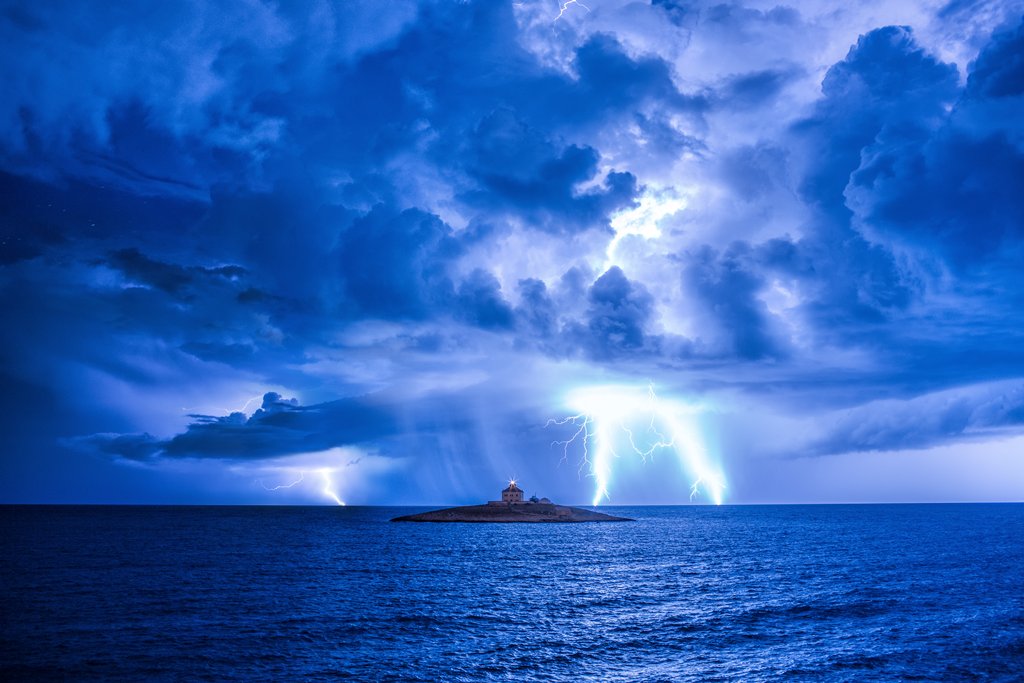
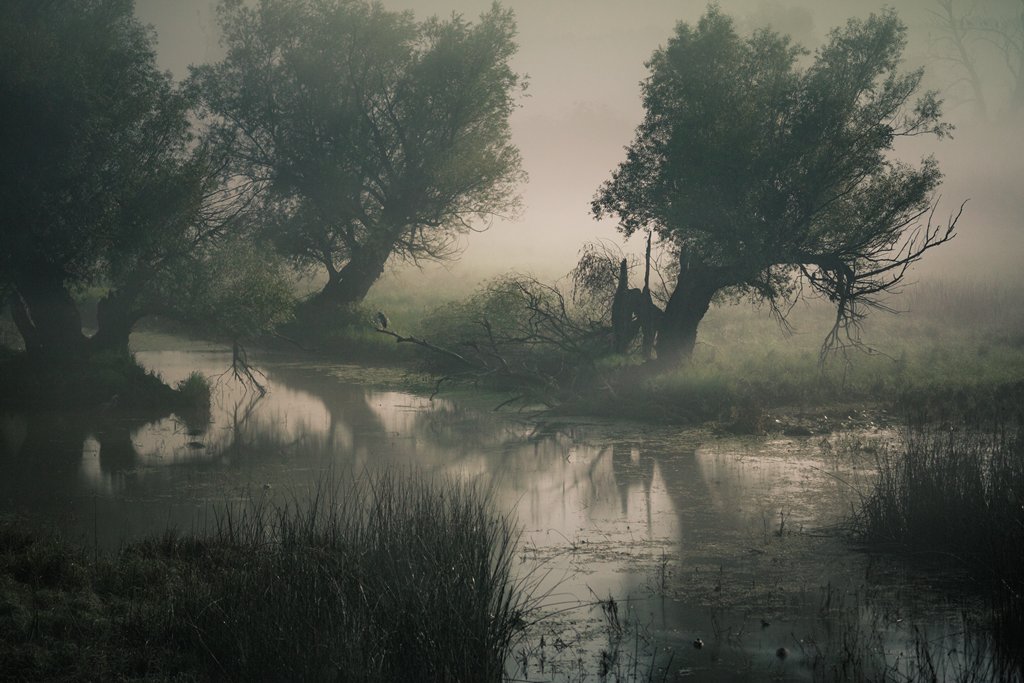
Kopački Rit
The images of Romulić and Stojčić examine the nature, landscapes, architecture and culture of Croatia. Although they embrace innovative photography techniques and contemporary multimedia modes of expression, beneath the fresh perspectives lie a palpable love of Croatia and some of its greatest assets. Wholly apolitical, their photographs can be enjoyed by all.
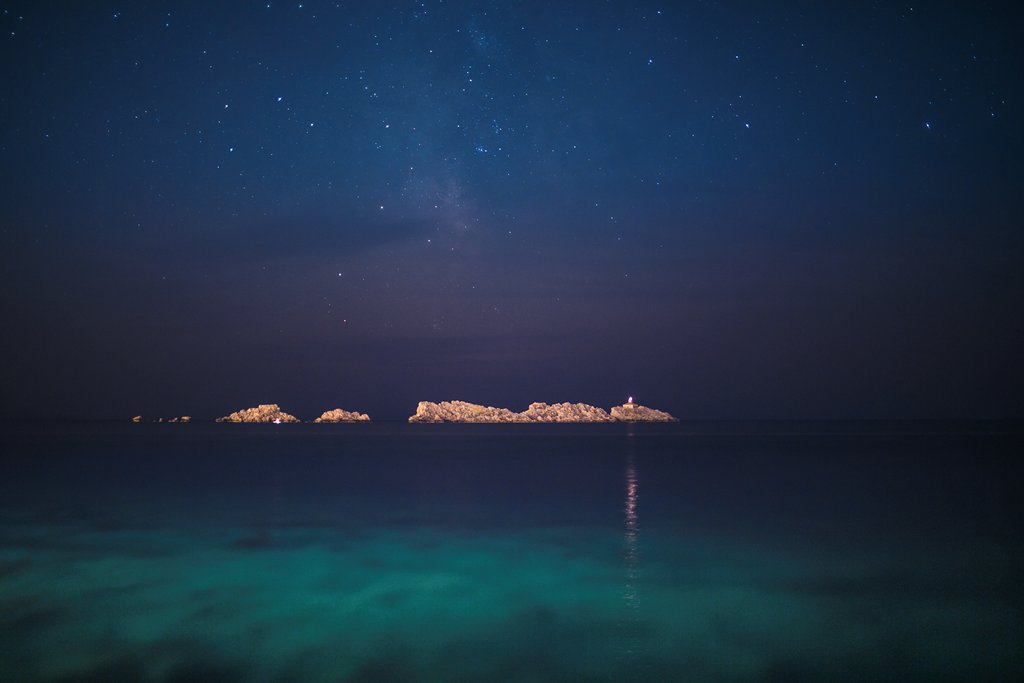
Grebeni kraj, Dubrovnik
Romulić and Stojčić were first spotted when they won first place at the Zagreb Tourist Film Festival in 2012 with the short film 'Višnjan Observatory'. One year later, they held a large international exhibition on the occasion of Croatia's accession to the European Union; 'Flash of Diversity' was exhibited in Budapest, Brussels, Rome, Linz, Moscow and Kiev.
Makarska
Their joint work as Romulić and Stojčić has appeared in about 10 books and several exhibitions in Croatia and abroad. They are also frequent collaborators with Total Croatia News – you can see one of their stunning photographs at the start of each day if you follow our Facebook page and set to 'see first'. There are few better ways of waking up than with a beautiful photograph of Croatia that will stay with you for the rest of the day.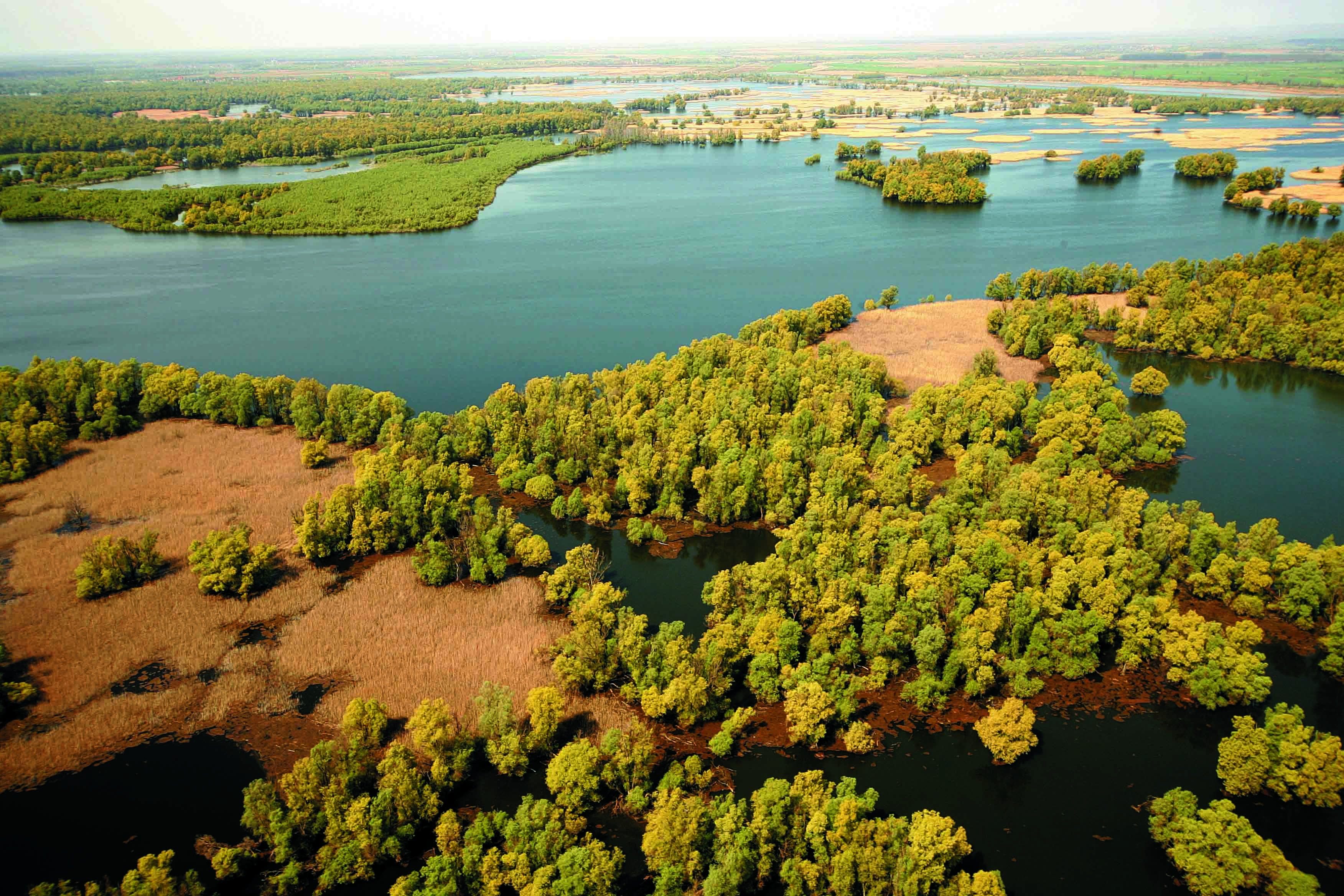
Kopački Rit
Today, Romulić & Stojčić run a successful multimedia studio that deals with professional photo and video production. They maintain a special interest in tourism and architecture and collaborate with numerous tourist boards, construction companies, architects and designers.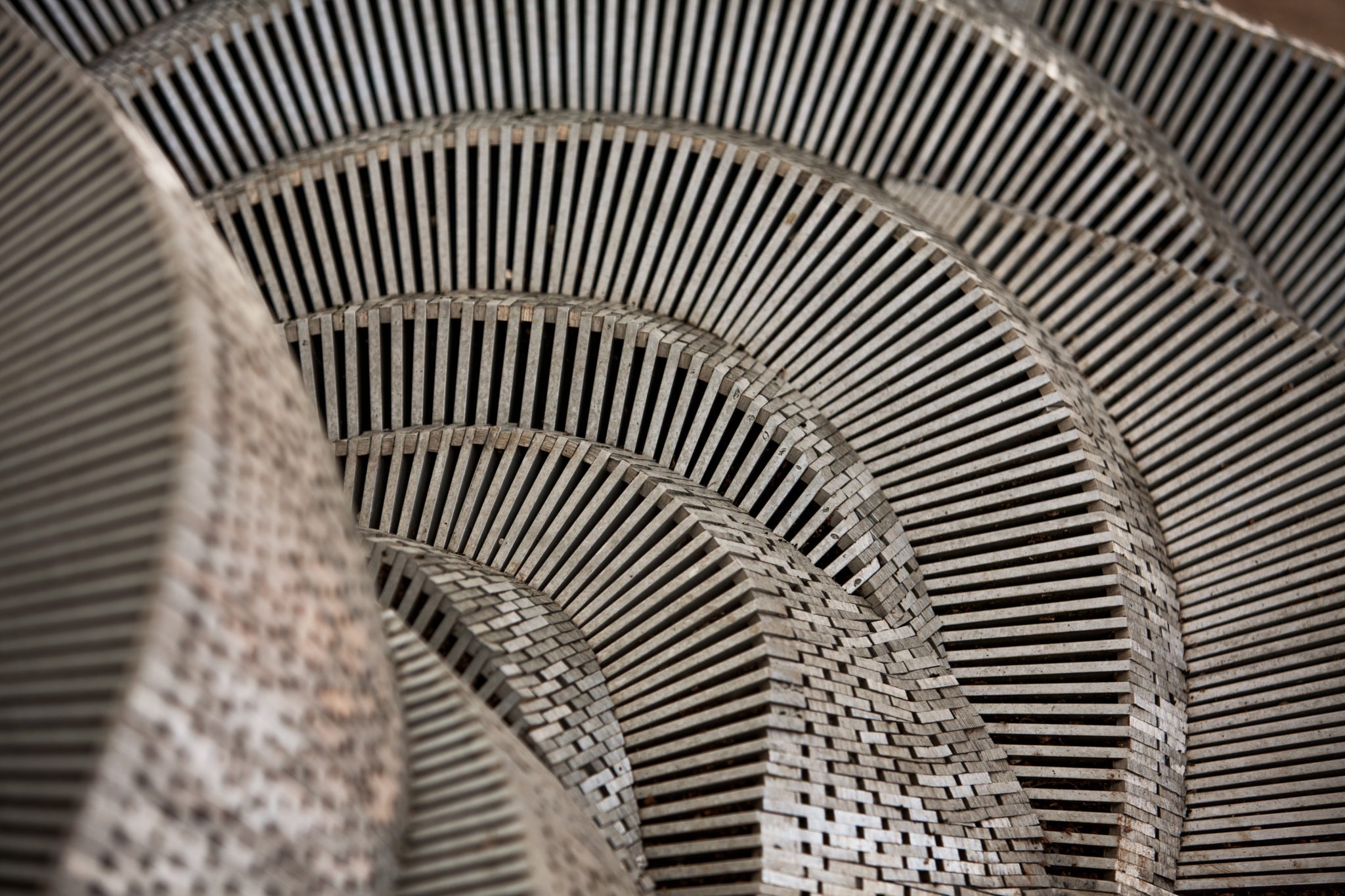
All photos © Romulić and Stojčić
Motovun Named Second-best Wine Tourism Destination in Europe
October 26, 2019 - The European Cultural Tourism Network named Motovun the second-best European destination for sustainable cultural tourism in the wine tourism category. Motovun is thus positioned between two renowned French wine destinations, behind the first-placed Loire Valley and ahead of the third-placed Pays d 'Armagnac.
Glas Istre writes that the official proclamation of the best European destinations for sustainable cultural tourism in different categories was held in Granada, Spain, where Motovun also received the European Iter Vitis Award.
The applications were evaluated by a jury of experts from several European countries, nominated by the organizers - European Network of Cultural Tourism and Project Partners - European Travel Commission and Europa Nostra and NECSTouR. The election was also supported by the Council of Europe's Iter Vitis Cultural Route.
In the competition of 55 destinations from 19 European countries, the best European destinations of sustainable cultural tourism included three Croatian destinations, each in its own category - Motovun, Krk and the Batana Eco-Museum from Rovinj, which placed first in its category.
"Congratulations to all the wine tourism stakeholders in the Motovun Municipality. This is a huge recognition of everything that has been done so far and the motivation for an even greater momentum of Motovun as a wine destination," said Motovun Tourist Board Director David Matkovic on Facebook.
“It is the first recognition for all that has been done so far in the field of wine tourism. It is deserved by all the stakeholders of wine tourism, especially our winemakers, who have recognized the value of this segment and, in addition to their wine business, offer facilities such as winery management, lodging, wine tours…. We were not hoping for second place, so we are pleasantly surprised to be positioned between the two renowned French regions that have come a long, long way in the area of wine tourism. We invited representatives of the two French wine regions to the Iter Vitis General Assembly, to the international wine tourism conference "Vitis - from the heritage to the brand", which will be held this year from November 14 to 16 in Motovun. Thus, Motovun will host the General Assembly of Iter Vitis, the Council of Europe's Cultural Route, which is another high-level wine event in the field of wine tourism. At the European level, the highest possible,” Matkovic points out.
The award was accepted by Motovun Mayor Tomislav Pahovic, who is also the president of the Motovun Tourist Board, which formally applied for the competition.
“It is a special and beautiful feeling, considering we are one of the top three finalists, with two truly reputable wine destinations in France. Being in such nice company, sharing experiences, and talking to people who engage in similar activities and have similar goals is always interesting. We are in talks with the finalists to come to Motovun for the Iter Vitis conference and maybe even sign a cooperation agreement and network our winemakers with the winemakers of these two famous French regions. The special European Iter Vitis Award, which we also received in Spain, is an additional recognition. It is an organization that deals with cultural tourism, which includes wine and everything that has to do with it. This means that they too recognized the quality of Motovun, the Motovun area as a wine area, and what we have to offer. They see the potential, of course, for further development. There is room for further development in the first-ranked French wine destination, the Loire valley, so how could there not be in Motovun?” Pahovic concluded.
Motovun can boast some of Croatia’s top winemakers - Benvenuti, Bertoša, Fakin, Facchin, Novak, Roxanich, Tomaz, Valenta - who make the best use of Motovun's natural resources for wine production, recognize the potential of wine tourism, and continuously invest in expanding production capacities and equipping wineries, especially tasting rooms and accommodations. There is excellent momentum in Motovun as a wine destination, and the opening of the specialized Wine & Heritage Hotel Roxanich has undoubtedly aided in this.
The international competition was open to tourist destinations across Europe who wished to present their results in sustainable cultural tourism across seven different categories. Motovun registered in the category of culinary heritage, wine, food, and gastronomic tourism, and applied under the title "Motovun - A cultural, historical and gastro-enological center of the interior of Istria".
Rovinj also continues to be successful, especially when it comes to the synergy of culture and tourism. This is confirmed by winning first place at the European Destination of Cultural Tourism in the category of intangible cultural heritage, which was awarded to the Batana Eco-Museum.
“Behind every award is a lot of seemingly invisible work, which is to say, behind the scenes. What I always emphasize is that our Association is characterized by a diversity of professions, knowledge and skills that are complementary and contribute to sustainable development in all segments - economic, cultural, social and environmental,” said Tamara Nikolic Đerić, the program manager of the Batana Eco-Museum, who took the opportunity to thank all members of the Casa della Batana - Batana House Association for their dedicated work with which they conveyed a voice about this Mediterranean gem - Rovinj.
To read more about travel in Croatia, follow TCN’s dedicated page.
Croatian Destinations in European Sustainable Tourism Competition Final
If you know anything that lies beneath the surface-level of the tourism industry and you think of sustainable tourism, Croatia is likely not positioned very high on your list. The Croatian tourism ''strategy'' is questionable at best, and so is its old and incapable infrastructure when it comes to trying to cope with damaging, mass tourism.
The likes of Dubrovnik, its incredible overcrowding, traffic, poorly prepared infrastructure and cruise ship hell are notorious examples of just how not to do things, and Croatia's UNESCO protected southernmost city is also the country's most famous tourist destination.
Thankfully, there are several much less famous Croatian destinations that could work to balance out beautiful Dubrovnik's semi-disastrous reputation in terms of sustainable tourism, and two of those destinations are far from the extreme south of Dalmatia, in the rolling green hills of Istria, in the north of the country.
As Poslovni Dnevnik/Marta Duic writes on the 20th of September, 2019, Motovun, Krk and Rovinj's popular Batana Eco-museum are among the finalists for the best European Destinations for Sustainable Cultural Tourism.
Motovun and the aforementioned Rovinj museum are both located in Istria, while Krk is a large island in Kvarner, belonging to Primorje-Gorski Kotar County.
The finalists of the European Travel Commission selection for the best European destinations for sustainable cultural tourism have now been announced. Motovun is a finalist in the wine tourism category, along with two other renowned European winep-oriented destinations, namely the French destinations of Pays d´Armagnac and of course, the Loire Valley.
In a competition of 55 destinations from 19 European countries, the above-mentioned little Istrian town is not the only finalist from Croatia. In the category of intangible heritage, among the finalsites, is the amazing Batana Eco-museum in Rovinj, and in the category of innovation and digitisation, the island of Krk is a finalist with its digital presentation of the rich cultural heritage of the island of Krk.
The winners by category will be announced at the grand ceremony, which will take place on October the 24th in Granada, Spain.
Make sure to follow our dedicated travel page for much more.
Motovun Municipality Sets Animal Welfare Example to Rest of Croatia
July the 20th, 2019 - When it comes to animal welfare, it's an understatement to say that there is a lot to be desired for in Croatia when speaking in general terms. Of course, on an individual level the care tends to be good, bar a few cruel and disgusting acts which unfortunately take place all over the world. The state's initiatives for animal welfare however, are desperately lacking.
One of the charms of the Croatian coast are its many, many cats wandering around the stone streets in search of a dropped fish or a bit of meat from under a restaurant table. While some find the presence of so many (often loud) street cats a bit off-putting, most people find that multicoloured cats, sometimes with a missing ear or eye, searching for scraps among the array of legs to be sweet.
Dubrovnik, where the cat colonies reign strong, is one of Croatia's problem cities when it comes to the care of these animals. Instead of introducing a capture, sterilise and release program funded either by the local government or indeed possibly through the EU, Dubrovnik chooses to completely ignore the increasing issue of too many feral cats wandering the streets, breeding not only among themselves but in turn breeding parasites and potentially dangerous diseases.
Cruel individuals tend to try to ''fix'' this problem by placing poison down, resulting in a slow and absolutely agonising death for the animal that has eaten it, as well as for any animal which then comes to eat its body.
The famous makeshift animal shelter located on the top of Bosanka, Žarkovica, run by the tireless animal lover Sandra Sambrailo and receiving no support from the city is just another shame of Dubrovnik which it has tried to push further and further away from the glitz and the glam of the centre of town, as if exporting its problem out towards the border with Bosnia, so as to have as little to do with it as possible.
This ugly side of Dubrovnik isn't seen by many, and that is, just as with many other Croatian tourist destinations - just how they like it.
Fortunately, unlike the City of Dubrovnik and its continually neglectful, shameful policy towards its stray animals, a municipality in Central Istria with much less international popularity has taken charge in caring for its stray cats.
The Motovun Municipality writes on its Facebook page:
''In cooperation with activists, the vet hospital and the Motovun park communal company, the Motovun Municipality is taking care of stray cats. The cats are regularly sterilised/castrated, and a few days ago, the Motovun Municipality also received two wonderful new cat feeding stations.
The feeding stations consist of a covered area for food and water, and in the extension, there is a separate space in the form of a box where the animals can escape from the cold and rain.
The feeding stations are located beneath the first city gates, and below the kindergarten. The aim is to provide the animals with a safe and quiet feeding and living space to try to keep as many cats as possible away from the city squares and off the streets, as well as from the terraces of hospitality facilities.
We'd like to thank Radijal K Izrada Stolarije carpentry, who made and donated the feeding stations for the cats, we'd like to thank activists for caring for the animals and for their cooperation, we'd also like thank the vet hospital in Poreč for its excellent cooperation and professional work, suggestions and assistance, and the utility company Motovun park d.o.o. which transported the new feeding stations here to Motovun and set them up at their foreseen locations.
The Municipality of Motovun is a pet friendly destination!''
Bravo, Motovun!
Follow our dedicated lifestyle page for more information on animal welfare in Croatia, how you can help, and much more.
Motovun Film Festival Joins Movement Against Single-use Plastics
The Motovun Film Festival, which runs from July 23 to July 27, is joining the global action ‘Plastic Free July’, aiming to raise awareness of the harms of single-use plastics, their permanent environmental pollution, and the consequences for living organisms, reports HRTurizam on July 11, 2019.
A simple calculation of last year’s Motovun festival brought some interesting results. The plastic cups that were used each day could build a tower higher than the Motovun hill, which stands at an unbelievable 277 meters above sea level!
Thus, with this year's slogan “Don’t throw our cups away“, the Motovun Film Festival will encourage caterers to pick up cups, straws and plastic utensils during the event. Those engaging in action will be labeled 'PLASTIC FREE', and visitors will be invited to support the caterers in action. Single-use plastic cups will be replaced by reusable ones, which visitors will be able to return for money back or keep as a souvenir.
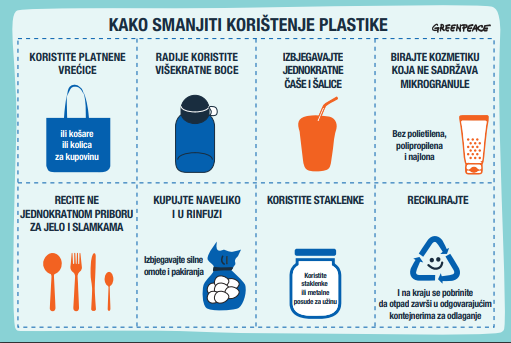
Greenpeace Croatia is a partner of the festival, whose representatives will host a series of workshops and lectures about the ’shackles of plastic’.
Their representatives will attend a lecture on Thursday, July 25 at 18:30 to speak about the harmful effects of plastic and, in particular, the microbiology on the environment and life in general, the scale of pollution with all future implications, and solutions for the prevention of further pollution, as well as the ways each individual can actively participate in the promotion of rational and environmentally conscious use of plastics. At that time, activist Marko Capek will use his example of how he completely removed plastics from his life, and will also hold a workshop for making harmless deodorants and sunblocks.
Also on Saturday, July 27, at 18:30, Goran Zgrablić, a chef, sommelier and laser physicist, will hold a mini-course for cooking without waste, after which all the participants will prepare a meal together.
Within two years, a ban on single-use plastics will be incorporated into the laws of the EU countries and the actions that are currently being undertaken as pioneering efforts will become mandatory.
To read more about lifestyle in Croatia, follow TCN’s dedicated page.


